728x90
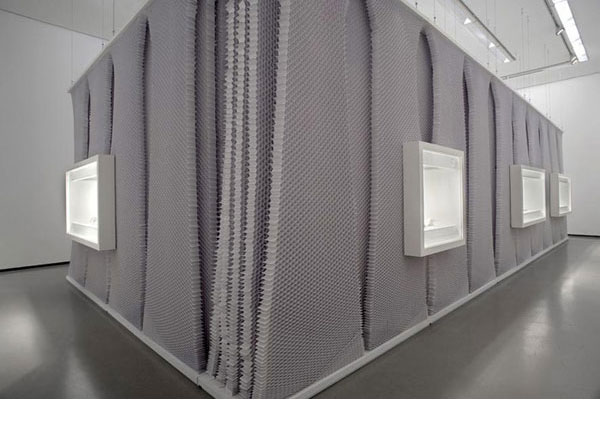
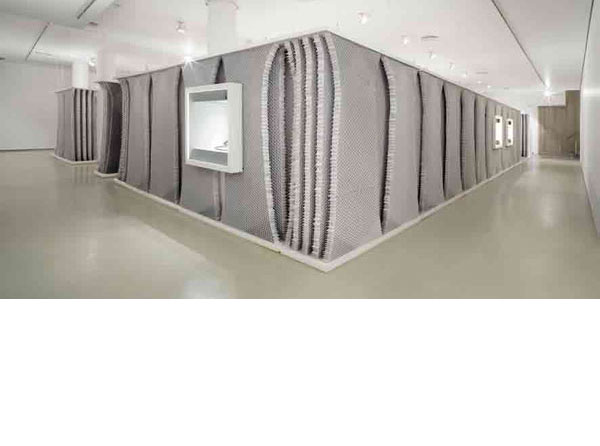
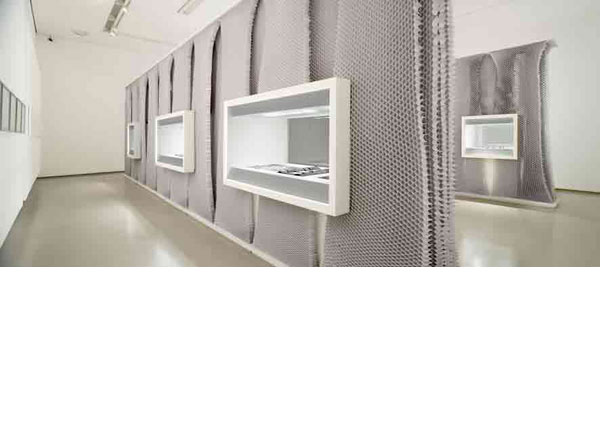
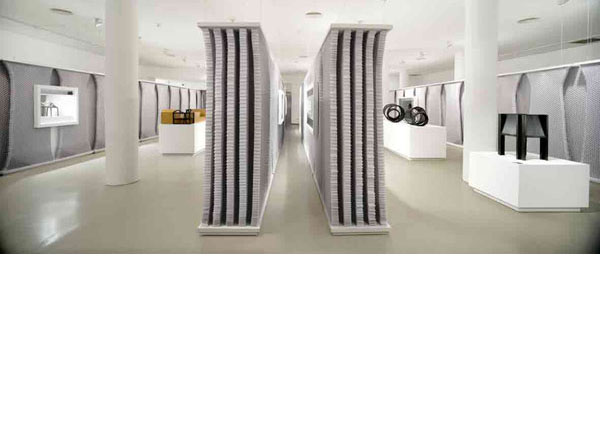
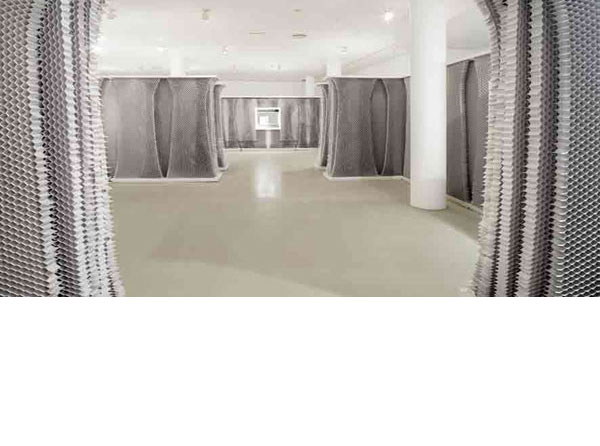
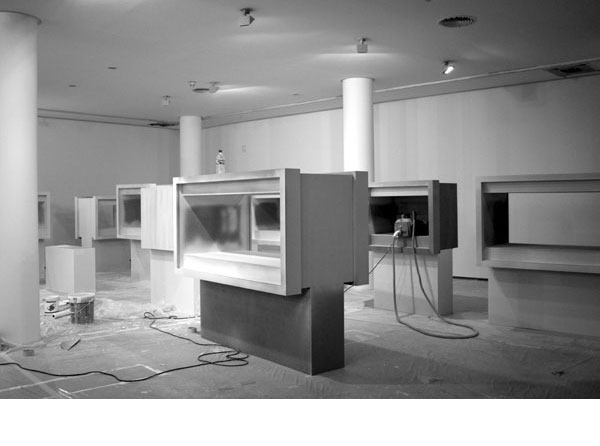
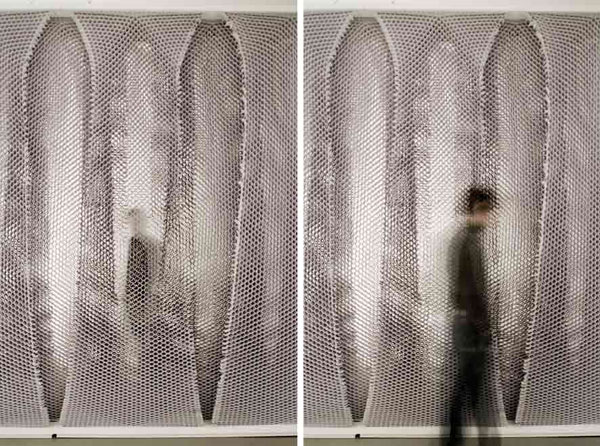
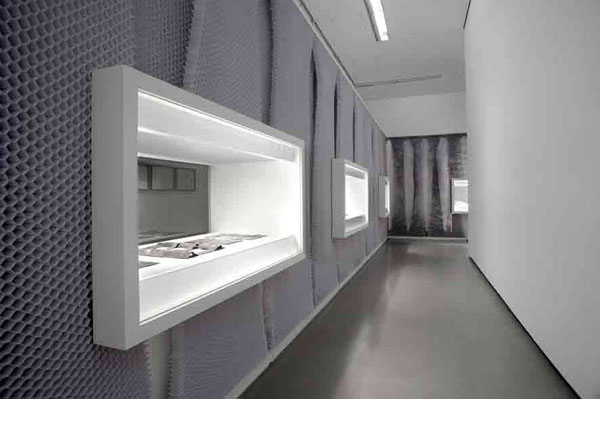
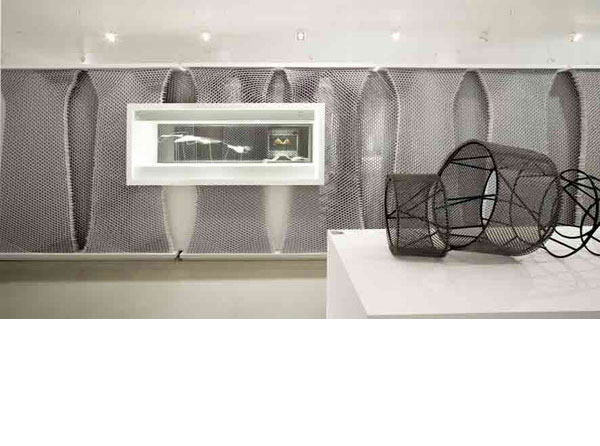
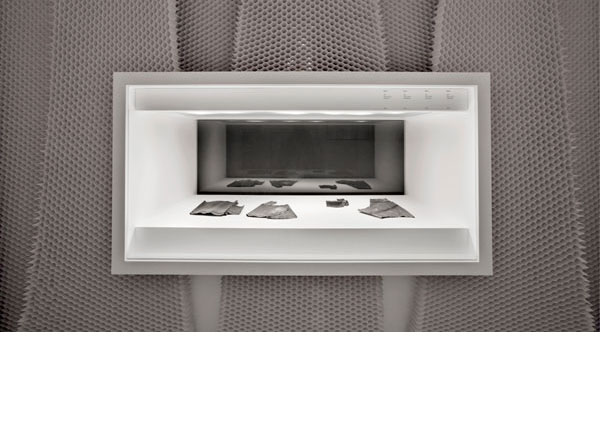
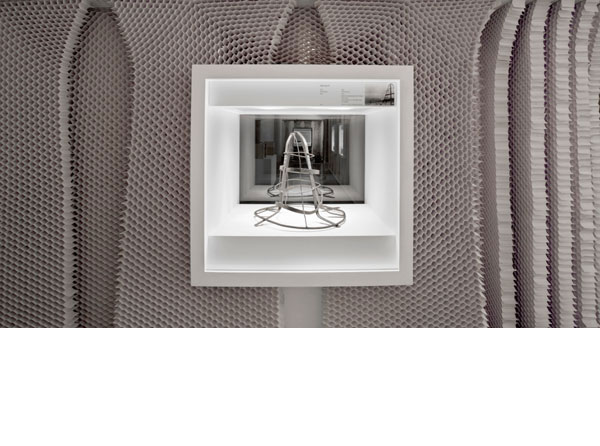
inventiveness. From paper lamps to the recycled paper used inside wood doors to reinforce them there are a few hours of investigation, and the conviction to find in the paper industry a material that would feel our architectural aims, and be ecological friendly and economic.
The technical and technological implications of the material drove to the definition of a standard module, build out of a couple of the mentioned standard doors and 5 layers of paper. A thick wall could be set up; its perpendicular view, creating a moaré, offered transparency within spaces and pieces; a tangent view would show a solid texture, building the limits of the
constructed space, and frame the pieces. The attributes of the material depending on how it was approached were one of the key aspects of the project.The installation responded to ecological and sustainable issues. Not only the design was part of an itinerant exhibition, but
also more, the main material used to build up was made up of recycled paper and could be recycled again. Moreover, decision on the material implied a radical decrease in costs.
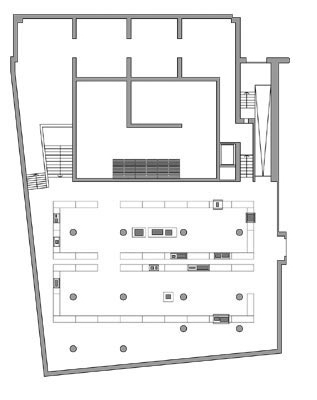
from ca-so
그리드형
'REF. > Interior' 카테고리의 다른 글
| [ Stanley Saitowitz | Natoma Architects ] Mississippi Blues (0) | 2010.01.15 |
|---|---|
| [ 4-pli ] MKG Wardrobe (0) | 2010.01.14 |
| [ Marc Topilsky ] The T House (0) | 2010.01.07 |
| [ eins:eins Architects ] Nat. Fine Bio Food Restaurant Interior (0) | 2010.01.06 |
| [ Patricia Urquiola ] Interior of the Mandarin Oriental Hotel in Barcelona (0) | 2010.01.04 |